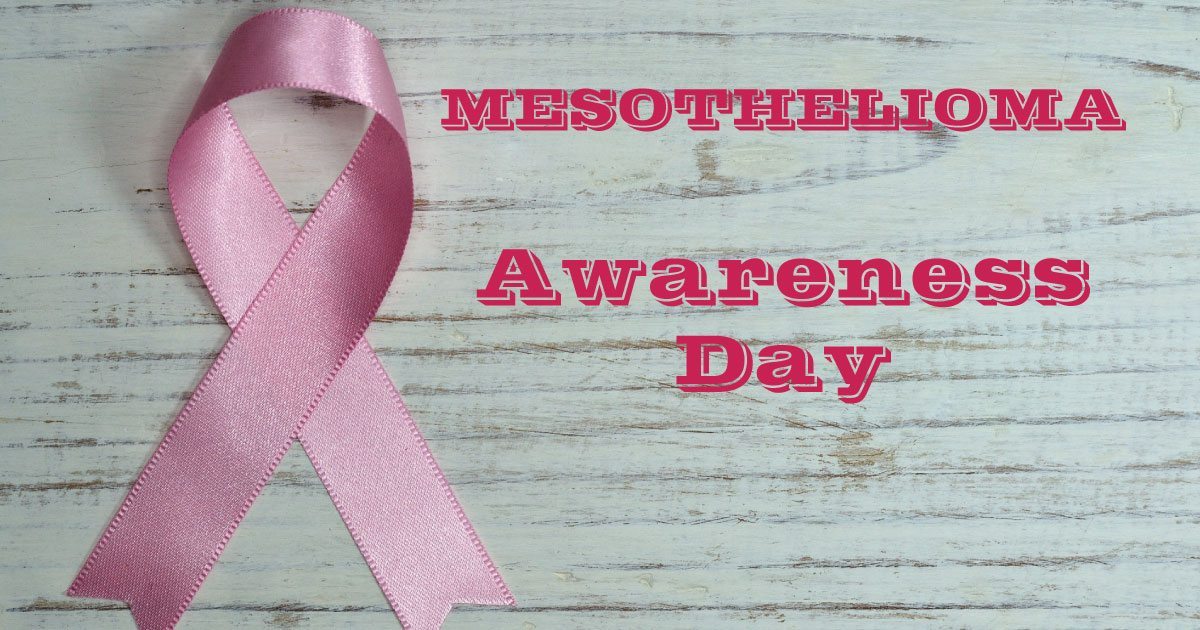Month: May 2012

Gene Therapy Moves Scientists One Step Closer to a Mesothelioma Cure
Finding a cure for mesothelioma did not seem possible just several years ago. The asbestos-caused cancer is extremely aggressive, and the cancerous cells invade the lungs and spread throughout the body often rendering standard cancer treatments ineffective against the disease. However, with the recent advances in gene therapy, now being touted as the next frontier in medicine, there is new hope in the medical field that cures are on the horizon for patients with rare and incurable diseases such as mesothelioma.
Ricki Lewis, a New York-based geneticist and author, explores this “next frontier” in her latest book The Forever Fix. The book follows the journey of the use of gene therapy to restore the vision of a young boy who was nearly blind from a hereditary disorder. The doctors replaced the single defective gene in the New York boy’s eyes that prevented his eyes from using vitamin A to send visual signals to his brain. Once the defective gene was replaced, the boy’s vision was restored and no further treatments or surgery were required.
“The goal of gene therapy is to replace faulty instructions,” said Lewis, who has a Ph.D in genetics from Indiana University. “It’s not right for every disease. But it is an approach that can be considered some day along with drugs, surgery and everything else.”
Most rare diseases, of which there are nearly 7,000 in the United States, are caused by a single gene defect, making them better candidates for gene therapy, Lewis said. Cancers, however, are often caused by a combination of genes as well as environmental factors. In the case of mesothelioma, asbestos is known to cause the disease, but researchers now believe a person’s genetics may determine whether they will actually contract the disease.
Lewis points to a study led by Dr. Jill Ohar of Wake Forest University, first reported in Oct. 2009, where as part of a new mesothelioma clinical trial, her team is investigating whether a person’s genes increase the risk of developing mesothelioma. Ohar began her research when she found “that there is a strong tendency for mesothelioma to run in families and it tends to be associated with a family history of cancer, which suggests a genetic susceptibility.”
“Getting at the basis of why one person develops mesothelioma and another person doesn’t, that is going to hold a clue to really fighting it,” Lewis said. “Then we will know what to do the gene therapy on.”
Mesothelioma victims typically show disease symptoms years or even decades after exposure to asbestos in an industrial or manufacturing workplace. The disease is eventually fatal, but aggressive therapy may prolong the lives of patients who are diagnosed early. Hopefully soon, mesothelioma patients will enjoy long, productive lives through research on genetics.
Sources :
- The Forever Fix
http://us.macmillan.com/theforeverfix/RickiLewis - mesothelioma clinical trial
https://clinicaltrials.gov/ct2/show/NCT01590472?term=mesothelioma+and+genetics&rank=1

Sleeping Pill May Be “Potent” Agent in Fight Against Malignant Mesothelioma
Mesothelioma is one of nearly 7,000 diseases that is designated as an ‘orphan’ disease. The distinction is given to a disease or disorder that affects fewer than 200,000 Americans at any given time. Currently, rare diseases affect over 30 million Americans. Mesothelioma is diagnosed in just 3,000 Americans each year, with just as many dying from the disease.
According to government statistics, between 85 and 90 percent of orphan diseases are serious or life-threatening, yet only about 200 of them currently have any effective treatments. Now, according to a recent study, a treatment for one disorder may be beneficial in fighting mesothelioma and other cancers.
Researchers at the Fred Hutchison Cancer Research Center in Seattle report that a drug that is used to treat sleep disorders “appears to be a potent inhibitor of cancer cells” and could lead to the “development of safer, more-effective cancer therapies.”
The researchers, led by Carla Grandori, M.D., Ph.D., an investigator in the Hutchinson Center’s Human Biology Division, used advanced genetic research techniques which allowed them to find the “Achilles heel” in the oncogene known as “Myc,” which is hyperactive in many cancers, including lung and liver. Myc is considered untreatable due to its resistance to cancer drugs.
“Their [Myc-driven cells] rapid growth and division damages their DNA, and they rely on other genes to repair that damage. Disabling those genes can cripple the cancer’s ability to grow,” said Grandori.
Further research found nearly 100 genes that could be disabled, or blocked, and would lead to the death of the Myc-driven cancer cells. Normal cells were not affected leading Grandori and the team to conclude that “each of these genes is a potential target for a new, nontoxic cancer therapy.”
The sleeping pill was found when the team conducted a web search for a compound that inhibited the CSNK1 epsilon gene that was found to kill cancer cells while sparing healthy tissue when blocked. When Myc-driven cancerous mice were injected with the sleeping pill compound the mice “thrived” and the tumors shrunk away.
Grandori said the compound was “just sitting on the shelf. It is possible that the next great breakthrough in cancer therapy is already out there, sitting on a shelf, hiding in plain view.”
Grandori believes there are countless more potential cancer-fighting agents, or treatments for other diseases and disorders available. The use of the sophisticated genetic research techniques, like the ones her team employed, Grandori said, “could speed up the development of new cancer therapies a thousand-fold.”
Mesothelioma is an aggressive cancer, caused by exposure to airborne asbestos fibers, that is very challenging to treat. The cancer has a complex growth pattern often ruling out surgery and radiation therapy since pinpointing the malignant cells is difficult. In addition, the disease is chemo-resistant, leading physicians to prescribe chemotherapy as palliative care as opposed to curative. A drug that can halt growth of mesothelioma cells would be a major breakthrough in the treatment of mesothelioma patients.
The findings are published in the May 21 issue of the Proceedings of the National Academy of Sciences.
Know more about mesothelioma and how we can help.

Memorial Day is Time to Honor America’s Veterans
The long Memorial Day weekend is one of the most popular holiday weekends in the United States. Celebrating the start of summer, many families head to the beach or to the shopping malls for special bargains. However, it is important that Americans not forget the meaning of Memorial Day and take the time to honor our fallen soldiers, whether it was on the battlefield or long after from injuries or illnesses, such as mesothelioma, suffered from their service.
MemorialDay.org reminds U.S. citizens: “On Memorial Day we need to stop and pay with sincere conviction our respects for those who died protecting and preserving the freedoms we enjoy, for we owe those honored dead more than we can ever repay.”
Mesothelioma is a rare cancer, affecting the lining of the lungs, caused by exposure to asbestos. Although nearly 3,000 new cases are reported annually in the U.S., statistics show that military veterans account for over one-third of those cases. Unfortunately, mesothelioma is extremely difficult to treat and is virtually impossible to cure.
Between the 1940s and 1970s asbestos was popular with the military. During that time asbestos was used for insulation in both military buildings, including mess halls and barracks, and ships. It was also used as an insulator around hot water heaters and cooling systems, and in the gaskets placed inside airplane engines and large machinery.
The New York mesothelioma law firm of Belluck & Fox, LLP has seen the devastation a diagnosis of mesothelioma can cause to veterans and their families, and they are committed to helping these families get compensation for their disease. In August 2011, Belluck & Fox, LLP represented a Navy veteran diagnosed with mesothelioma from exposure to asbestos aboard ships. The firm won the man a $32 million verdict, which ranked among the five largest New York verdicts of 2011.
Mesothelioma has a long incubation period, so now, veteran’s over the age of 60 are beginning to show symptoms. Contracting mesothelioma is a life-time risk for some of our veterans, and Memorial Day is just one day when Americans can take the time to thank veterans for all they endured for our freedom.
Following is an excerpt from President Barack Obama’s 2012 Memorial Day address:
“No words can ever bring back a loved one who has been lost. No ceremony can do justice to their memory. No honor will ever fill their absence.
But on Memorial Day, we come together as Americans to let these families and veterans know that they are not alone. We give thanks for those who sacrificed everything so that we could be free. And we commit ourselves to upholding the ideals for which so many patriots have fought and died.”
Thank you to all who have bravely served our country!

British Lung Foundation Targets DIY Home Renovators to Prevent Mesothelioma
The British Lung Foundation (BLF) is running an asbestos awareness campaign focused on do-it-yourself (DIY) home renovators. The campaign called “Take 5 and Stay Alive,” is aimed at preventing DIYers from becoming victims of lung disease, including mesothelioma, lung cancer and asbestosis, caused by asbestos exposure.
According to the BLF, nearly 4,000 Britains die each year from asbestos-related diseases. Of all of the diseases, mesothelioma is the most serious with patients typically living less than a year after diagnosis. Symptoms often don’t present themselves until decades after exposure. Then, according to the BLF, “it’s often too late to do anything. So you need to get the facts to protect you and your family before you start your DIY project.”
Although many believe that the only people susceptible to mesothelioma are industrial workers, such as insulators, plumbers and pipefitters, electricians, sheet metal workers, or construction workers, who were exposed to asbestos fibers over an extended period of time, the U.S. Environmental Protection Agency has said, “Asbestos is a human carcinogen with no safe level of exposure.”
BLF suggests before beginning a DIY project, to “get the answers to these 5 crucial questions about asbestos:”
- What is asbestos?
- Where and when was asbestos used?
- What does asbestos look like?
- What if I find asbestos in my home?
- Where can I get all the facts?
Answers to all of these questions can be found on the BLF website or on MesotheliomaHelp.org.
When asbestos is present in structures it often does not present a hazard unless it is disturbed, causing the fibers to become airborne. When the fibers are breathed into the lungs, they then become lodged in the thin membrane that lines and encases the lungs, leading to respiratory diseases.
Because of the dangers posed from handling asbestos, individuals should not attempt to remove it on their own. Many companies across Great Britain and the United States specialize in the removal of this hazardous substance and should be contracted for the work.
Close to 3,000 Americans die from the cancer yearly, and just as many are diagnosed with the disease. Although there is no cure for mesothelioma, it can be treated with varying degrees of success through the use of surgical procedures, chemotherapy and radiation.

Virginia Joins States Observing Annual Mesothelioma Awareness Day
The state of Virginia has become the 11th state to pass legislation permanently proclaiming Sept. 26 as mesothelioma awareness day. The day recognizes the many victims of mesothelioma, a form of cancer caused by exposure to asbestos.
Virginia Gov. Bob McDonnell recently signed the proclamation at a ceremony attended by Robena Reid, an advocate for mesothelioma victims who lost her mother to the disease, state delegate Mark Sickles who introduced the proclamation and supporters of the American Cancer Society and Virginia Breast Cancer Foundation.
Adopted unanimously by the Virginia House and Senate, Mesothelioma Awareness Day is designed to improve public understanding of the once rare form of cancer and the dangers of chronic asbestos exposure. When microscopic asbestos fibers are inhaled, they may lodge in the lung, producing inflammation and eventually disease. Mesothelioma produces tumors in the lining of the chest cavity and abdominal cavity.
“We are grateful to the Virginia Legislature for bringing much-needed attention to this often neglected cancer, and we hope this will prompt Virginians, as well as others, to learn more about this dangerous disease,” said Kathy Wiedemer, executive director of the Meso Foundation, a non-profit group that provides information and advocacy on behalf of mesothelioma victims and families.
Approximately, 2,500 to 3,000 cases of mesothelioma are diagnosed each year in the United States. Most sufferers are older workers, retired workers and veterans who were exposed to asbestos fibers in a workplace or during military service.
Asbestos building materials such as tile, insulation and flooring remain in many older houses and buildings. Ripping out the materials during remodeling or renovation projects can release asbestos fibers into the air, allowing them to be inhaled.
Frequently, the symptoms of mesothelioma are diagnosed only after the cancer has reached an advanced stage. Treatments for mesothelioma include radiation, chemotherapy and surgery, but the disease is often difficult to control.
Free Mesothelioma Patient & Treatment Guide
We’d like to offer you our in-depth guide, “A Patient’s Guide to Mesothelioma,” absolutely free of charge.
It contains a wealth of information and resources to help you better understand the condition, choose (and afford) appropriate treatment, and exercise your legal right to compensation.
Download Now